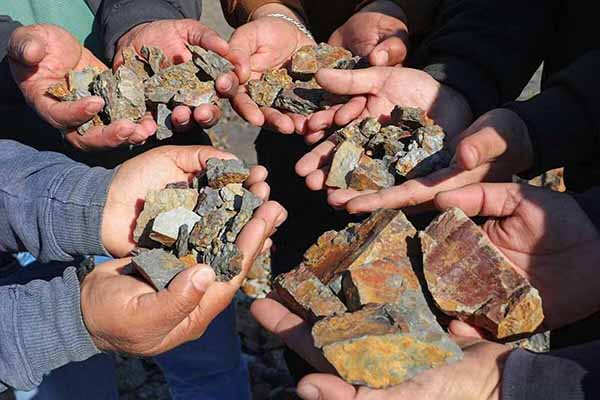Lithium is the third element in the periodic table after hydrogen and helium. It is also the lightest metal on Earth. This metal is non-ferrous, toxic and extremely reactive with water. It is so soft that it can be cut with a kitchen knife and has a low density. Lithium is termed a ‘cosmic’ metal. It is among the only three elements created at the beginning of our universe, according to NASA.
A study funded by the American space agency revealed that the big bang created a small amount of lithium when the universe was formed initially, but “the majority gets manufactured in the nuclear reactions that power the nova explosions”. According to the study, the nova explosions distributed the mineral throughout the galaxy. Most of the lithium we use in electronics and medicine today is delivered by the nova explosions. As for its discovery on Earth, it took some time to isolate it.
A Brazilian naturalist and statesman, Jozé Bonifácio de Andralda-e-Silva discovered the mineral petalite on the Swedish isle Utö in the 1790s, (Royal Society of Chemistry). Swedish chemist Johan August Arfwedson discovered this petalite in 1817. He was not able to entirely isolate the metal, though he did isolate one of its salts. The mineral is white to gray in colour, but turns bright crimson if thrown into fire. The name ‘lithium’ is derived from “lithos,” the Greek for “stone”. It was in 1855 that it was isolated for the first time, by British chemist Augustus Matthiessen and German chemist Robert Bunsen. They ran a current through lithium chloride to separate the element.
The Discovery:
Lithium is widely used in a variety of applications due to its unique chemical and physical properties. It is a crucial mineral used in the manufacturing of batteries for electronic devices. It falls in the critical resource category which was not available in India and we were dependent on its 100 percent import. “Geological Survey of India for the first time established Lithium inferred resources (G3) of 5.9 million tonnes in the foothills of Mata Vaishno Devi shrine at Salal village (Reasi) in the Salal-Haimana area of the Reasi district of Jammu and Kashmir,” the Ministry of Mines, Government of India, announced few days ago, making it one of the largest deposits of the metal in the world.
According to report, Lithium found in Jammu and Kashmir is of the best quality. The finds, in this case, are learned to include bauxite (the ore for aluminum) and rare earth elements, alongside lithium. According to the report, against the normal grade of 220 parts per million (PPM), the lithium found in J&K is of 500 ppm-plus grading. With a stockpile of 5.9 million tons, India will surpass China in its availability. India joined a select group of countries at the global level after this finding and it will fulfil the vision of Aatmanirbhar Bharat.
Benefits:
The unavailability of Lithium has been one of the reasons why India has been dependent on other countries for Li-Ion batteries. The recent discovery of reserves in J&K does come in as a new lease of life. It further enables India’s ambition to become self-sufficient in its energy storage needs. It is considered a crucial component for the production of rechargeable batteries. The recent discovery of this large deposit in India could potentially help the country to meet its domestic demand for metal. The demand has been increasing in recent years due to the growing popularity of electronic devices and electric vehicles. It could also help the country to become a major player in the global market.
Challenges:
However, the development of this lithium deposit is not without its challenges. The process of extracting lithium from the ground is complex and requires significant investments in technology and infrastructure. In addition, the environmental impact of lithium mining is a major concern. The government needs to ensure that the development of this deposit is done in a sustainable and environmentally responsible manner.
About the possible timeline for the extraction of lithium to start, it is said that G3 level study will now be followed by G2 and G1 study before the final extraction of the metal. Further, there is also a need for fully exploring the lower Himalayas across Jammu & Kashmir, Himachal and Uttarakhand. Lithium refining can be a complex and challenging process, depending on the source of the lithium and the method used for extraction.
The largest source of lithium is from mineral deposits such as spodumene, petalite, and lepidolite. This requires mineral processing to extract the lithium. This process involves crushing the ore. Further, separating the lithium using various techniques such as froth flotation, magnetic separation, and gravity separation. Another method for obtaining lithium is from brine lakes, where lithium is extracted through evaporation and solar concentration. This method is typically less complex than mineral processing but can take a longer time to produce a final product. India’s lithium reserves, if manufactured and refined judiciously, can potentially make it a world leader in the market.
About the author:
S. S. VERMA is a professor at the Department of Physics at S.L.I.E.T., Longowal; Distt.-Sangrur (Punjab).















